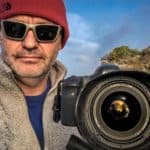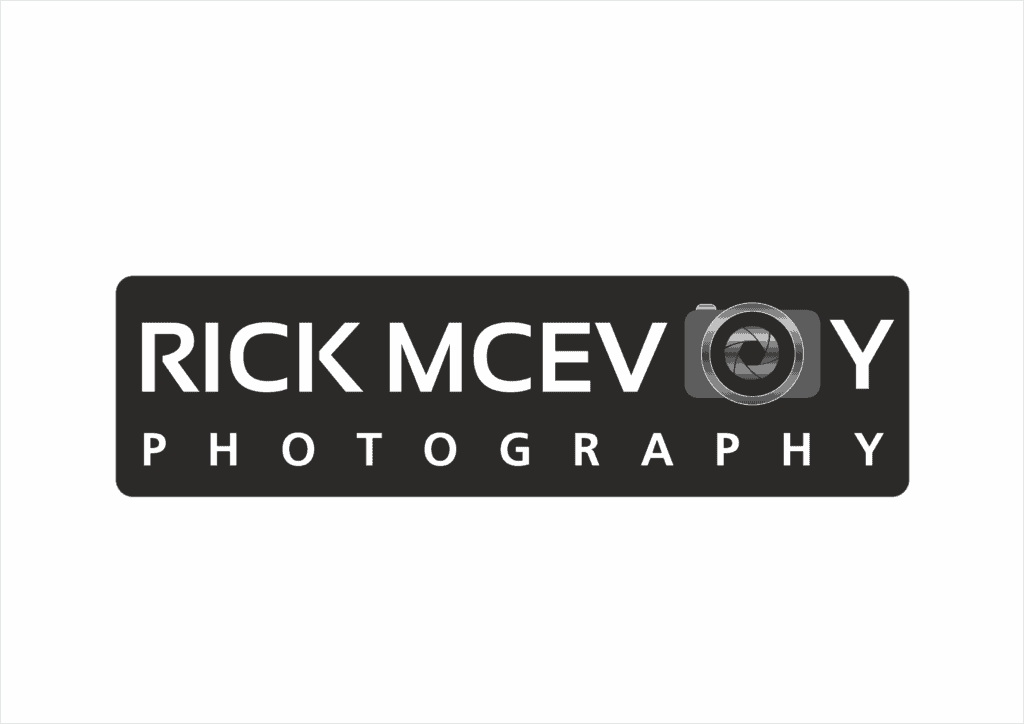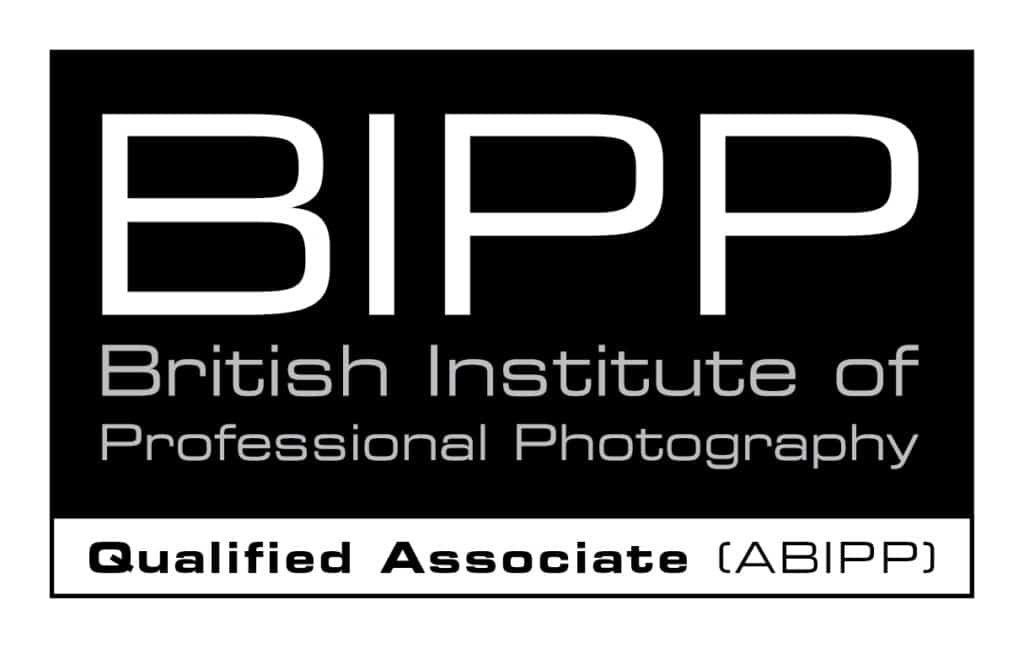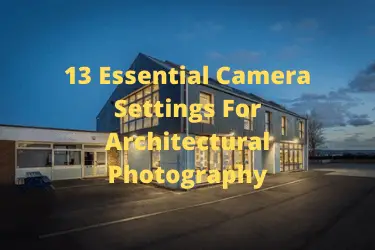I am an architectural photographer. I photograph buildings and also construction sites. Do you want to know how I do this?
The camera settings that I use for my architectural photography are these
- Aperture – F8 or F16
- ISO100
- Shutter Speed – selected by the camera
- Camera mounted on a tripod
- Camera level and verticals vertical
- Remote release/ self timer to activate shutter
- Back button focus on
- AF – One shot
- Auto Exposure Bracketing on – correct exposure/ 2 stops under/ 2 stops over exposed
- Drive Mode – Continuous Shooting
- Image Recording Quality – RAW
- Auto White Balance
- Metering – Evaluative
These are the settings that I use with my Canon 6D. If you want to know why I use these settings then read on. I will go though each of these settings and then go on to some other related stuff.
But first a bit about me.
I am an architectural and construction photographer. I photograph buildings and their surrounding environments. I am professionally qualified not only in photography – ABIPP, but also in building construction management – MCIOB.
So, I know my photography and my buildings!
A word on the links
Some of the links are Amazon Affiliate links – if you click on a link and it takes you to Amazon then that is one – if you then buy that thing I get a commission – you don’t pay any more though, Amazon just gets a bit less, which I am sure they can manage….
What cameras do I use?
I have been using Canon DSLRs for years and years, well over 30 years would you believe! I still use my old faithful Canon 6D for my architectural and construction photography work.
If you want to know more about this great camera then check out this post Is The Canon 6D Still Worth Buying In 2020? I know, I need to update this post. If you click on this link and the date has changed to 2021 then you know that I have done this!
But before we do anything else a word about exposure
Exposure – the three elements
There are three elements to the exposure a camera takes, which are aperture, shutter and ISO. These are known as the exposure triangle.
I won’t go into the exposure triangle here, there are lots of excellent resources that explain the exposure triangle in great detail.
Like this that I wrote.
The Exposure Triangle: Fully explained for beginners
And why not check out my podcast, Photography Explained Podcast Episode 27 – What Is The Exposure Triangle? (Revisited).
All I need to say is that these three elements work together to provide the correct exposure. If the light stays the same and you change the aperture to maintain the same exposure you have to change either the ISO or the shutter speed.
OK – let’s get back to the camera settings that I use
1 Aperture – F8 or F16
The aperture is crudely put the size of the opening in the lens that lets light through to the camera sensor. Maximum aperture on my Canon 17-40mm lens is F4. That is called wide open, and this aperture lets the most light in.
The minimum aperture is F22, which is the smallest opening in the lens that lets the least light in.
F8 is the sharpest aperture on my Canon 17-40mm lens. It is the sweet spot on many lenses. I use this as my starting point on every shoot.
As I tend to shoot at the 17mm end of the zoom range a lot of the time I am not concerned about the depth of field, as I am shooting so wide it is not an issue.
If, however I am photographing an item in the immediate foreground and want the background in focus as well I switch to F16.
And if I want a starburst effect for that shot into the sun I will go to F22. But only for that effect.
2 ISO 100
ISO is the sensitivity of the camera sensor. It derives from the days of film, where you had to buy a specific ISO film. Typically, ISO100 was for higher quality images in good light, and for example ISO1600 for photographing fast moving subjects or for use in low light.
With DSLRs the general principle is the lower the ISO the better. And ISO100 is the lowest native ISO on the Canon 6D.
So that is what I use.
3 Shutter speed – determined by the camera
I use AV Mode on my Canon 6D. Remember the exposure triangle? Aperture, shutter speed and ISO are all interrelated.
And yes, as my aperture is F8 and My ISO is 100 all that is left to sort is the shutter speed.
This is why I let my camera choose the correct shutter speed to provide the correct exposure with the other two parts of the exposure triangle set.
Going back to the apertures, using the maximum aperture lets the most light onto the camera sensor. Change to the minimum aperture, the smaller opening lets less light in. Less light means a slower shutter speed.
That is exposure explained very quickly!
4 Canon 6D mounted on a tripod
I always use a tripod. I only take architectural photographs hand-held due to space or physical restrictions. I use a Manfrotto 055 tripod and also a Manfrotto 190 Go tripod – depends on the circumstances.
I use a tripod to ensure that the pictures are absolutely sharp – this is why I don’t worry about the shutter speed.
And using a tripod helps me get the composition spot on.
Using a tripod helps me take better photos.
Tripod head
Talking of my tripod, I use an Manfrotto XPRO geared head. This allows me to make precise adjustments to get things just right.
5 Camera level and vertical
Very important this. I can always get the camera level horizontally – the Canon 6D has a clever thing that tells you if it is level or not.
Unfortunately it does not have a vertical one of these so I have to do that by eye. And sometimes I cant get the building fully vertical, so I get as close as I can in camera and do the rest in Lightroom.
6 Remote release/ self timer to activate shutter
My camera is securely mounted on my tripod. I do not want my camera to move when I take a photo so I do not touch the camera.
I have used various remote releases over the years, but these days this is what I do.
I use the in-built self-timer on my Canon 6D. I press the shutter release, and 10 seconds later the camera tales the photos.
Simple.
7 Back button focus
This is an important one. Back button focus means that I do not focus using the shutter release button. I have set my camera so I use the AF-ON button on the back of my camera.
Why do I use back button focus?
I like to focus first and then take the image separately. This means that the camera will vary the shutter speed if the light changes between image captures. And focussing and exposure are separate deliberate acts.
8 AF – One Shot
Yep – I take three photos (more on that in a bit) using the self-timer and bracketing using AF One Shot!
This might sound counter intuitive but this is how it works – I had to get my camera and try this to check as it does not sound right!
9 Auto Exposure Bracketing on
Ah. Another one that causes an amount of controversy. This is HDR photography.
This is what I do.
I set my Canon 6D to take three exposures.
- The first exposure is the correct exposure calculated by the metering system.
- The second photo is 2 seconds underexposed – this is darker.
- The third photo is two stops overexposed – this image is lighter.
- If we go back to the exposure triangle principle this is how the shutter speed varies.
Remember that the ISO stays the same, so the only variables are the aperture and the shutter speed.
Why do I do this?
I do this so I capture more of the highlights and shadows than in a single image. And for scenes with a significant variation in the light levels this can be invaluable. I use this on all my interior shots, and also on my exterior shots so they all look the same.
10 Drive Mode – continuous shooting
That is how I take the three photos – was getting confused before…
11 Image Recording Quality – RAW
I only ever shoot in RAW. RAW captures the maximum amount of data in a scene that the camera can capture. I never use JPEG as this applies processing to the image which cannot be undone – it is baked in.
And with RAW I can change the white balance in Lightroom to my hearts content.
12 Auto White Balance
Controversial one this. I shoot in RAW (more on that later) and process my images in Lightroom. I can change the white balance at will in Lightroom
So why spend precious time on site doing anything other than this. Sure, there are people who will say I should get it right in camera, and they are of course correct.
But I have to get as many great compositions as I can in a very limited time. If I am changing things on my camera I am missing out on shots.
13 Metering – Evaluative
This works for architectural photography and is seldom changed. Evaluative metering on the Canon 6D is basically the camera evaluating the brightness of a number of zones within the composition and using this data to calculate the correct exposure.
And some more stuff that will help.
Canon 17-40mm lens
This is my go-to lens. It is very wide, small and light and produces great images. And they are not that expensive either! You can pick up a Canon 17-40mm F4L lens on Amazon for about £600 at the time of writing this post. Sure this is a lot of money but not for what you are getting.
Focal Length 17mm
I use this focal length for probably 95% of my architectural work. I only tend to use other focal lengths for external shots where I want a nice tight composition.
17mm is super wide but still looks natural. Sure, it is flattering to an interior space but not deceiving which is important.
My L Bracket – dead handy
Talking of my camera being level (which I was earlier) – my L Bracket
I use an Three Legged Thing Universal L Bracket so I can quickly swap from landscape to portrait orientation without losing either the composition or the correct position of the tripod head – if it the levels and verticals are correct when I swap from landscape to portrait and back again they still are correct.
This is an excellent example of camera gear that helps me work better and more efficiently which helps me take better photos.
Why are these settings so important?
I know that the images that I take one day will be taken in the same way with the same camera settings the next day.
Quite often I photograph the same building on more than one day. Sure, the light will be different but everything else will be the same.
And this means that you cannot tell if I took the photos for shoot on the same day or not.
Apply that logic further and images taken from different locations on different days when out together look like a cohesive set of images.
Time constraints on site
Often I am photographing live construction sites, very often buildings nearing completion. I have to work fast – live construction sites are busy places and I do not have time to spare fiddling with my camera. I need to spend time on my compositions and virtually forget the technical side of things.
And that is what all these settings allow me to do.
Taking three photos and merging them together in Lightroom give
s me a huge margin for error – I have a range of four stops of exposure to work with which again allows me to concentrate on what I am photographing and not how I am photographing something.
What if you don’t use a Canon 6D?
Well the exposure is relevant to any camera that has these adjustments, which is most mirrorless/ DSLRs. As is the exposure triangle.
As to the other settings each manufacturer has different names for the same thing, you just need to find them out for your camera. And if you don’t know them this is a great time to get to know them!
Not every camera will have all the features of the Canon 6D, but most will in one form or another. The Canon 6D is quite an old camera now.
Do I only use a Canon 6D?
No. I have just started using a micro four thirds camera, an Olympus OM-D EM10 Mk 2. I am using this in parallel with my Canon 6D at the moment – Once I had found bracketing and worked out the exposure I was good to go. This took me a matter of minutes to fathom out so regardless of your camera it should not take you too long.
And that is the point of this – the principles and most of the settings for taking architectural photographs that I describe in this post can be applied very quickly and easily to other makes and models of cameras.
When do I change from these settings?
I am in the main photographing things that are not moving. Buildings and the surrounding environment.
There are times though when I do have to vary things.
If it is windy and there are plants, grass and in particular trees in a photo then I will have to think about my shutter speed. If I am shooting outdoors most of the time I am shooting at F8. So, to increase the shutter speed I have to adjust the ISO. 400 is fine, well I can get away with ISO 1600 on my Canon 6D externally without too many problems.
Sometimes I will freeze clouds, but most of the time I like to get some natural movement into them.
Lightroom copes with these variations wonderfully well so don’t worry about that.
Just be aware of stuff moving in a scene and adjust what you are doing accordingly.
Related reading on architectural photography
I have recently published a number of new posts which should be of interest to you as you have made it this far!
Construction Photography Advice and Guidelines for Clients
How to commission architectural photography
73 Great examples of My Construction Photography in Hampshire
51 great examples of my construction photography in Dorset
How to become a construction photographer
Construction product photography
How I process my architectural photography images in Lightroom and Photoshop
How I take my architectural photography images a detailed explanation
25 helpful architectural photography tips for beginners
Architectural Photography with the Excellent Olympus EM1 Mk2
Let’s not forget my architectural travel photography
I also do lots of travel photography. And when I travel I photograph buildings.
My tried and trusted camera settings have been applied in lots of different locations all over the world.
Here are 5 architectural photos that I have taken along with the settings used for each photo.
And here are links to my three online portfolios
Architectural Photography Portfolio
Landscape Photography Portfolio
Photography Explained Podcast
Yes I now have a podcast – check it out on the Photography Explained Podcast website.
Photography things explained in plain English in less than 10 minutes without the irrelevant detail.
Related viewing
I have a video recorded to accompany this blog post, which you can watch here on my You Tube channel.
Summary
I hope that you have found this post all about the camera settings I use for architectural photography helpful
Thanks for reading this post.
Any questions get in touch via my website. It would be great to hear from you.
Cheers from me Rick



